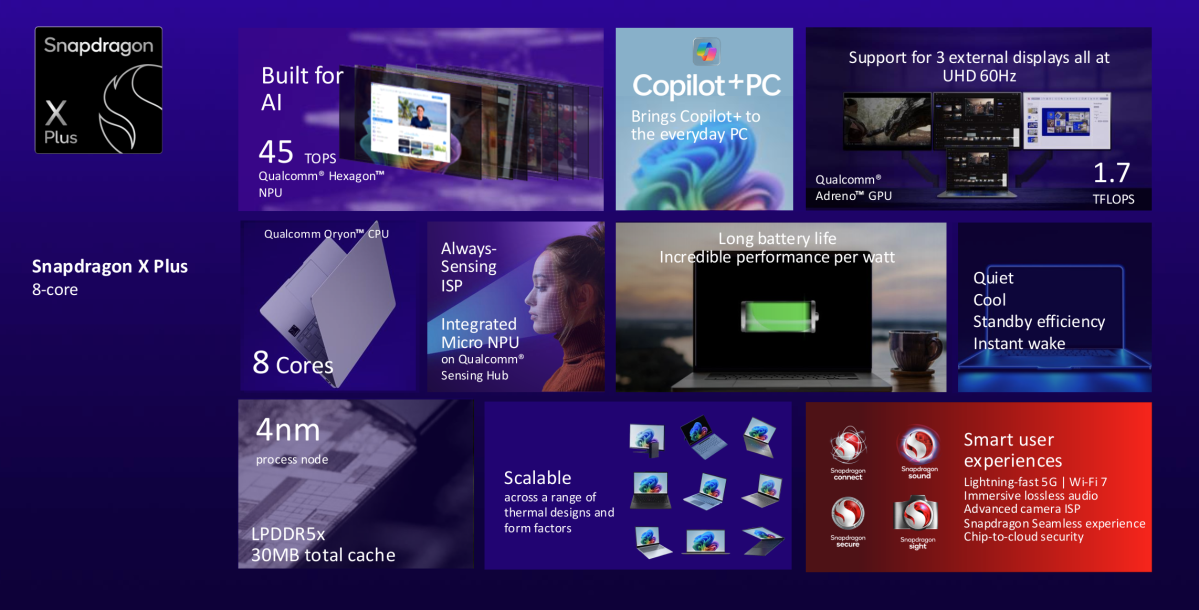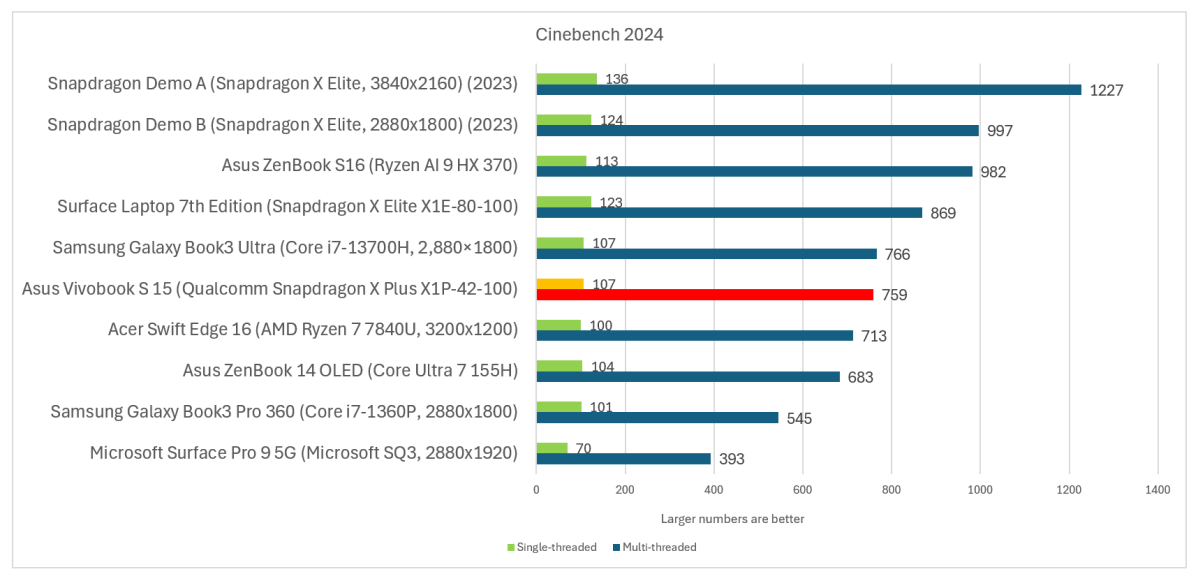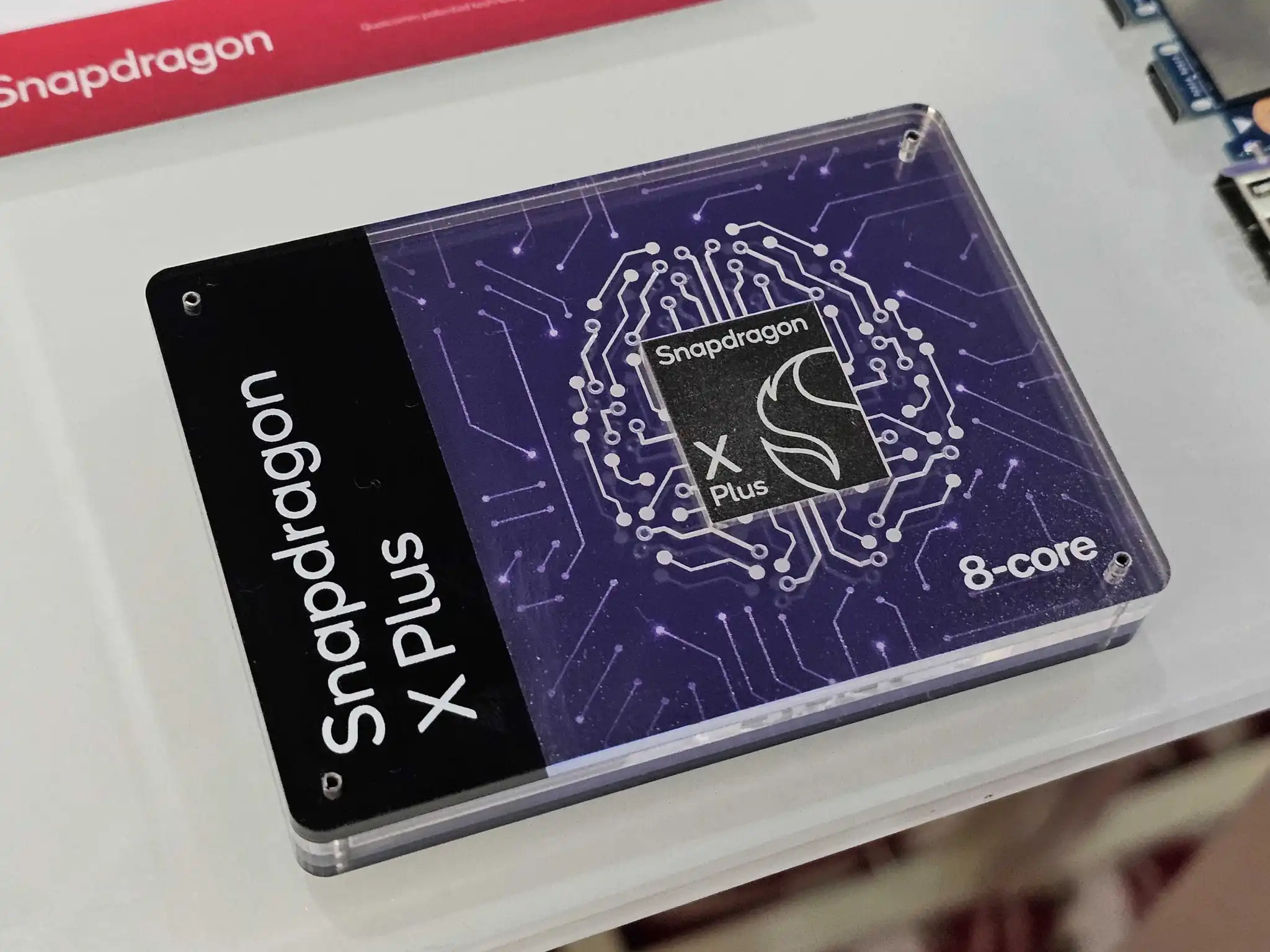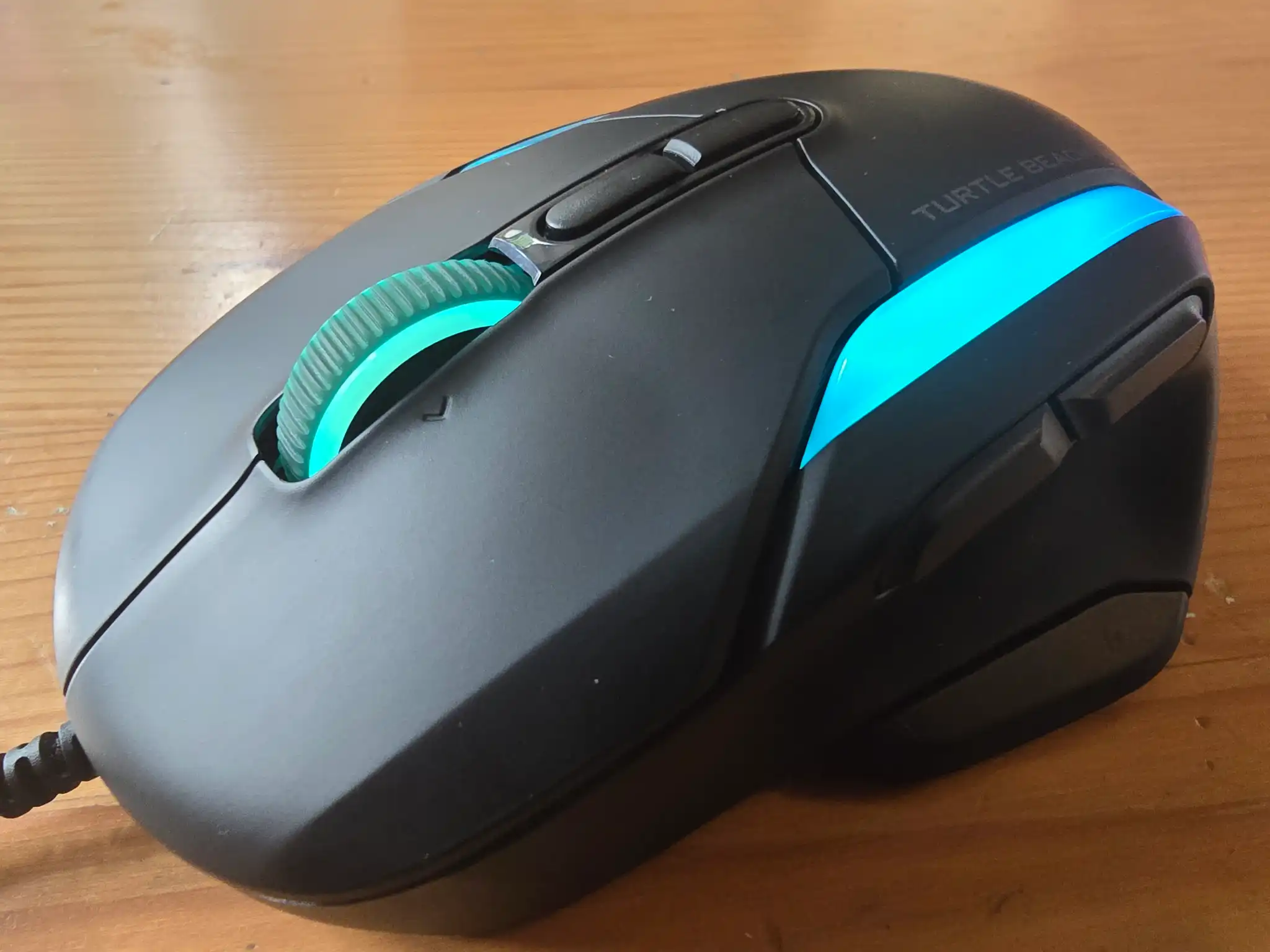The questions the new 8-core Snapdragon X Plus need to answer include, is it good enough for the price?
Qualcomm launched a pair of 8-core variants of the Snapdragon X Plus Wednesday at the IFA show in Berlin, expanding the reach of Windows on Arm products into what Qualcomm says will be the $700 to $900 range.
The Snapdragon X Plus 8-core chips, as they’re known, are also referred to by their two cryptic product number, the X1P-46-100 and X1P-42-100. They sit at the bottom of Qualcomm’s hierarchy of Snapdragon X Elite processors, just under the 10-core Snapdragon X Plus chips that launched earlier this year, with a dramatically smaller amount of cache memory.
Qualcomm chief executive Cristiano Amon launched the new chips at a press conference in advance of the IFA show in Berlin. “We have been on this journey to bring personal communication to personal computing systems,” he said. “And we have arrived.”
Qualcomm is employing a familiar strategy, moving up and down the product stack with various tweaks to the clock speed, core count, and cache size. Qualcomm’s older Snapdragon 8-series chips for the PC included a number of different variants — including the Snapdragon 8 Gen 2, for example — together with “Plus” variants and slower Snapdragon 7-series chips. All were designed to address separate segments of the market, allowing Qualcomm and its customers to expand the Snapdragon’s reach. In this case, Qualcomm believes that they’ll enable laptops and/or tablets to hit the $700 price point its competitors can’t touch.
All told, Qualcomm now sells a total of eight Snapdragon X chips, though the Snapdragon X Elite X1E-00-1DE at the top of the product stack has so far been reserved for a developer kit that isn’t available to consumers. One key feature: Qualcomm has left the AI TOPS capability unchanged at 45 TOPS.

Qualcomm
It’s fair to say that Qualcomm and its Snapdragon X Elite have considerably redefined the PC market. For the last two generations, rival Intel has pushed hard to lower the power consumption of its “Meteor Lake” and “Lunar Lake” Core chips, with on-chip controls that try to minimize power first and foremost. By contrast, Qualcomm bought Nuvia in part to bolster the performance of its Arm chips with an Oryon CPU core that can keep up with Intel’s best. In part, that’s due to an aggressive performance curve where Snapdragon chips now run at their fastest to try and outperform their rivals, using the native Arm architecture to keep power low.
Numerous PC makers have signed on to use the Snapdragon X family, including Microsoft with its Surface Pro and Surface Laptop, plus laptops from Acer, Asus, and others. Honor even entered the PC market specifically to use Qualcomm’s chip, and several PC makers are expected to use the new X Plus 8-Core chip as well.

Qualcomm
The Snapdragon X Plus 10-core chip, the X1P-64-100, is slightly unusual in that it lacks a turbo, or CPU boost. Both of the new 8-core Plus chips do, however, with the X1P-46-100 boosting to 3.4GHz and the X1P-42-100 boosting to 3.2 GHz. Like the other Plus chips, however, they only boost a single core at a time.
Qualcomm cut down the new 8-core Plus chip’s cache size to just 30MB, versus the 42MB that graces each and every Snapdragon X chip Qualcomm makes. The number of TFLOPs available to the Adreno GPU also fell dramatically, to 2.1 and 1.7. That seems to have reduced the video capabilities: the chips can only encode video at 4K30 and decode at 4K30 (10-bit) or 4K60 (8-bit). A Snapdragon X Elite can encode at 4K60 and decode at 4K120, with the same codecs as the X Plus. The ability to concurrently decode and encode video is also restricted to 1080p on the new X Plus, versus 4K capabilities in the X Elite. The X Plus chip can also capture video at just 36Mpixels, versus 64Mpixels for the X Elite.
Aside from that, the 8-core Snapdragon Plus chip offers few surprises. It maintains the 45 NPU TOPS that qualifies the Snapdragon X chips to be called Copilot+ PCs, and uses the same LPDDR5x memory and 8,448 megatransfer memory transfer rate of the other chips. It also includes the same Snapdragon X65 modem, Wi-Fi 7, and Bluetooth 5.4 that the Snapdragon X Elite uses, too.
Qualcomm;’s Amon also tipped a couple of new, welcome updates: NordVPN and ExpressVPN now have Arm-native apps, and Google Drive — a noted exception to the Windows on Arm ecosystem — will gain an Arm version by the end of the year.
Qualcomm 8-core Snapdragon X Plus Performance

Mark Hachman / IDG
Qualcomm offered us a chance to run some early benchmarks on the Snapdragon X Plus. Qualcomm provided a selection of laptops, upon which were preloaded benchmarks ranging from Cinebench to Geekbench. Because of time considerations, we ran two and compared them to previous tests. The test machine was an Asus Vivobook S 15, with a Snapdragon X Plus X1P-42-100 inside — the slowest of the new X Plus chips. A Qualcomm representative said that the price of the Vivobook S 15 is just $899, even with features like a 15.6-inch 3.5K screen.
You’ll notice some of the earlier test benchmarks listed here, even though we later tested the Snapdragon X Elite on shipping hardware. That’s just to give you an idea of what Qualcomm promised, and what it eventually delivered. The differences also represent updates to the drivers as well.

Mark Hachman / IDG
Essentially, what we’re looking at here is an answer to the question: is this new X Plus chip good enough for the price? And how will it all affect the battery life?
We can answer the first question, but not the second. We also don’t know the price of the Acer Vivobook S 15, either.

Mark Hachman / IDG
The market for long-lasting productivity PCs just got even more interesting.



